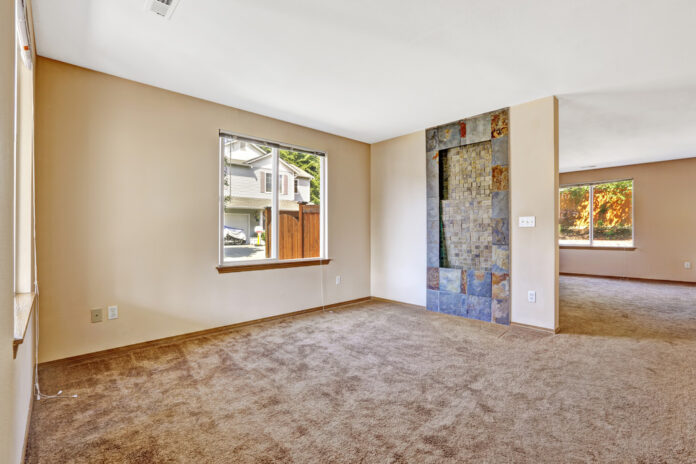Introduction
Whether you’re starting a new job, enrolling in college, or joining a club, introductions are an important part of making a good first impression and establishing relationships. Introductions can be intimidating – especially when you don’t know the other person – so it’s helpful to have some strategies to help break the ice.
Introducing Yourself
When introducing yourself, you want to provide enough information that the other person has a basic understanding of who you are. Start by saying your name and providing any relevant titles or positions (e.g., “Hi, I’m Joe Smith and I’m an accountant”). Next, share something about yourself that makes you unique (e.g., “I moved here from California last year”). You can also provide some brief background information about where you went to school or what kind of work experience you have if it’s relevant to the conversation.
Introducing Others
When introducing someone else, start by providing their name and position/title (if applicable). Depending on the situation, give a brief description of why they are there (e.g., “This is Bob Jones; he’s our new intern”) or explain how they know each other (“This is my friend Jane Doe; we met
History of Herringbone Pattern Flooring
The herringbone pattern flooring is a classic flooring design that has been used for centuries. It is characterized by its chevron-like layout, which features short planks of wood or tile set in an alternating V-shape. This pattern is attractive and durable, making it the perfect choice for any home or business.
The history of herringbone flooring dates back to the 17th century when it was first found in French churches and palaces. Initially, this type of flooring was made using wood, but eventually, tiles were used as well. The herringbone design was popularized during the Art Nouveau period in Europe; its ornamental style quickly gained popularity among architects and designers around the world.
Today, herringbone floors are still widely used due to their classic look and timeless appeal. They are usually associated with traditional spaces like parlors and dining rooms but can also be seen in modern homes as well as commercial buildings such as restaurants and boutiques. Herringbone floors are typically made from hardwood or ceramic tile but can also come in a variety of materials including marble, stone, vinyl, laminate and more – allowing you to customize your space according to your own personal taste!
Benefits of Herringbone Flooring
Herringbone flooring is a stylish and sophisticated type of flooring that can add a classic, timeless look to any room in the home. It is one of the most popular types of flooring due to its attractive design, durability and low maintenance requirements. With so many benefits to offer, it’s no wonder herringbone flooring has become a popular choice for homeowners looking for something unique yet functional.
One of the main benefits of herringbone flooring is its timeless look. By using pieces that vary in size and color, you can create an eye-catching pattern that will always remain in style. Herringbone floors are also extremely durable and will last for years with minimal upkeep required. They are made from hardwoods like oak or walnut which have natural resistance to scratches and wear over time, making them ideal for high traffic areas like hallways or kitchens where they may be exposed to heavy foot traffic or furniture use.
Herringbone floors are also very easy to clean and maintain compared to other types of wood floors; regular sweeping with a soft brush will keep it looking fresh without needing excessive effort on your part. The material itself is also naturally resistant to moisture damage so you don’t have to worry about spillages
Types of Herringbone Patterns
Herringbone patterns are one of the most popular and versatile designs used in interior decorating. The herringbone pattern is composed of a series of short, parallel lines that form a distinctive V-shaped pattern. This type of design has been around since ancient times and is still commonly used today in everything from flooring to fabric to wallpapers.
The classic herringbone pattern consists of two sets of alternating 45 degree angled stripes which creates an interlocking diamond or chevron shape. It can be made with any material such as wood, tile, carpet or linoleum and can be laid out horizontally, vertically or even diagonally. This pattern looks great when used for floors because it adds visual interest without overwhelming the room. It also works well on walls as an accent piece or for full coverage wallpaper designs.
Another popular variation on the traditional herringbone is called the basketweave pattern which features wider strips that are woven together in a crisscross fashion creating a slightly more intricate look than standard herringbone patterns. This type works well as flooring in high traffic areas because it provides more durability and doesn’t show wear and tear as quickly as other types like parquet flooring might do over time.
Installation Process for Herringbone Floors
Herringbone floors have been a popular choice for many homeowners due to their classic and timeless look. Installing herringbone floors is not a difficult process, but it does require careful preparation and attention to detail. This article will provide an overview of the installation process for herringbone floors, from planning and prepping the space to laying the tiles.
Before beginning any installation, make sure you measure your room accurately and purchase enough tiles to cover your floor area. You may need extra tiles depending on how intricate you want your pattern to be, so plan ahead! You’ll also need a good quality adhesive, grout and sealant specifically designed for ceramic or porcelain tiles.
Once you have all the necessary supplies on hand, it’s time to start prepping the room by removing all furniture and existing flooring materials that may be in place. Ensure that the subfloor is level and free of any debris or imperfections. A vapor barrier should also be installed if needed in order to keep moisture out of your new flooring material.
Next comes laying out your herringbone pattern using tile spacers if necessary in order to maintain even spacing between each tile piece as well as ensure accuracy in the overall
Maintenance and Care
Maintenance and care are essential components of a healthy lifestyle. Without proper maintenance and care, we risk damaging our bodies and our environment. Maintenance is the act of keeping something in good condition through regular inspections, repairs, and upkeep. Care is the act of taking special attention to the needs of someone or something in order to keep them safe, healthy, and functioning properly.
The importance of maintenance and care applies to both individuals as well as larger systems such as businesses or governments. It’s important for humans to maintain their health by eating nutritious foods, exercising regularly, getting sufficient rest, managing stress levels, avoiding alcohol/drugs/tobacco use, visiting doctors for medical check-ups when necessary etc.. Doing this helps us stay physically fit and mentally sharp so that we can be productive members of society.
Organizations need maintenance too; they must have systems in place for budgeting resources wisely (e.g., financial management), handling customer service inquiries quickly (e.g., customer relationship management), recruiting qualified staff efficiently (e.g., human resource management), tracking performance metrics accurately (e.g., quality assurance) etc.. Keeping these systems running smoothly allows organizations to stay competitive in their respective fields while also providing quality products or services
Conclusion
Herringbone pattern flooring is a classic choice that adds an elegant and unique touch to any space. Its distinctive design is timeless yet modern, making it an ideal choice for both traditional and contemporary homes. Its versatility allows it to be used in a variety of ways, from covering entire floors to creating stylish accent walls. Herringbone pattern flooring can also provide increased safety and stability thanks to its interlocking pieces. All in all, herringbone pattern flooring provides a classic look that offers durability, style, and practicality.











